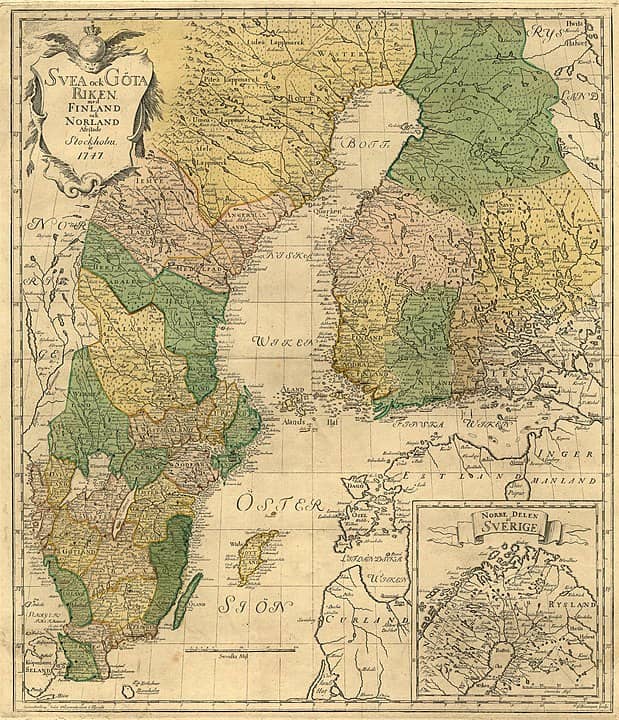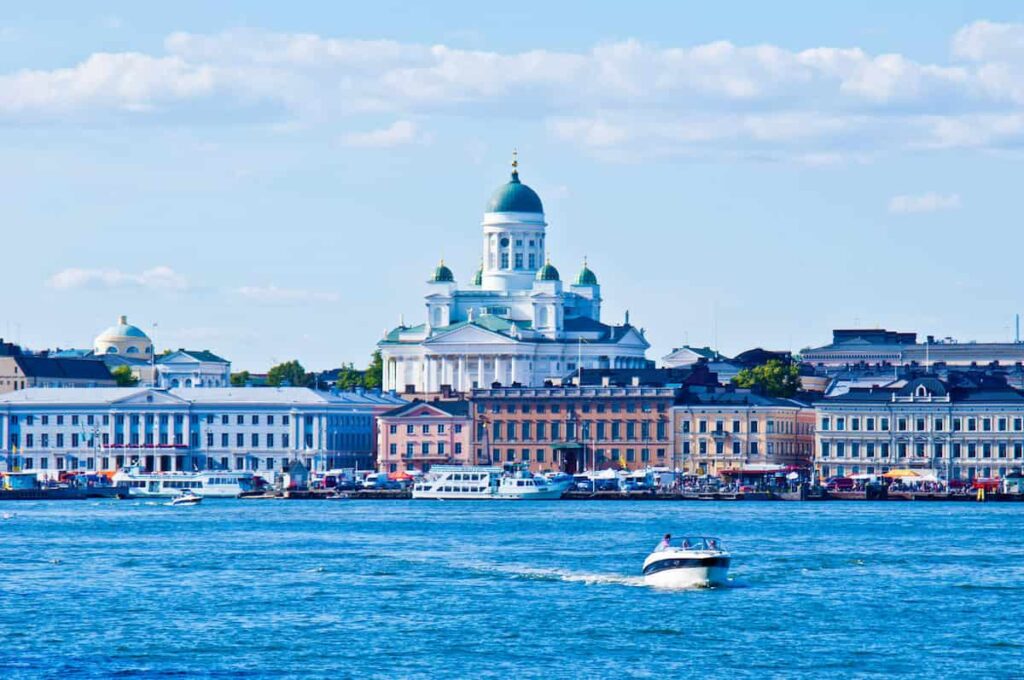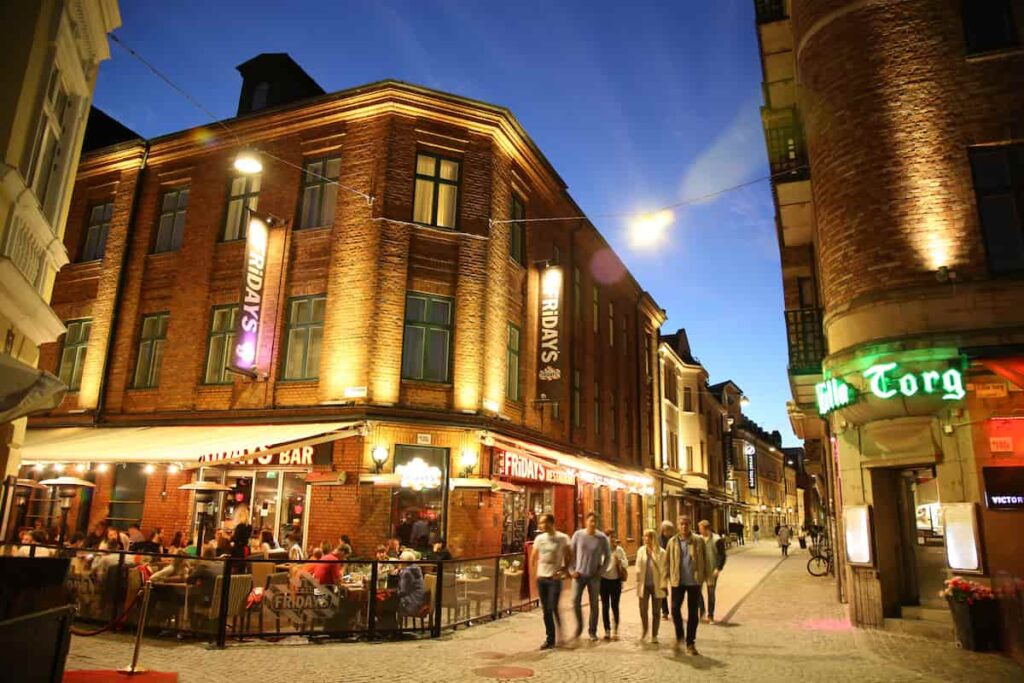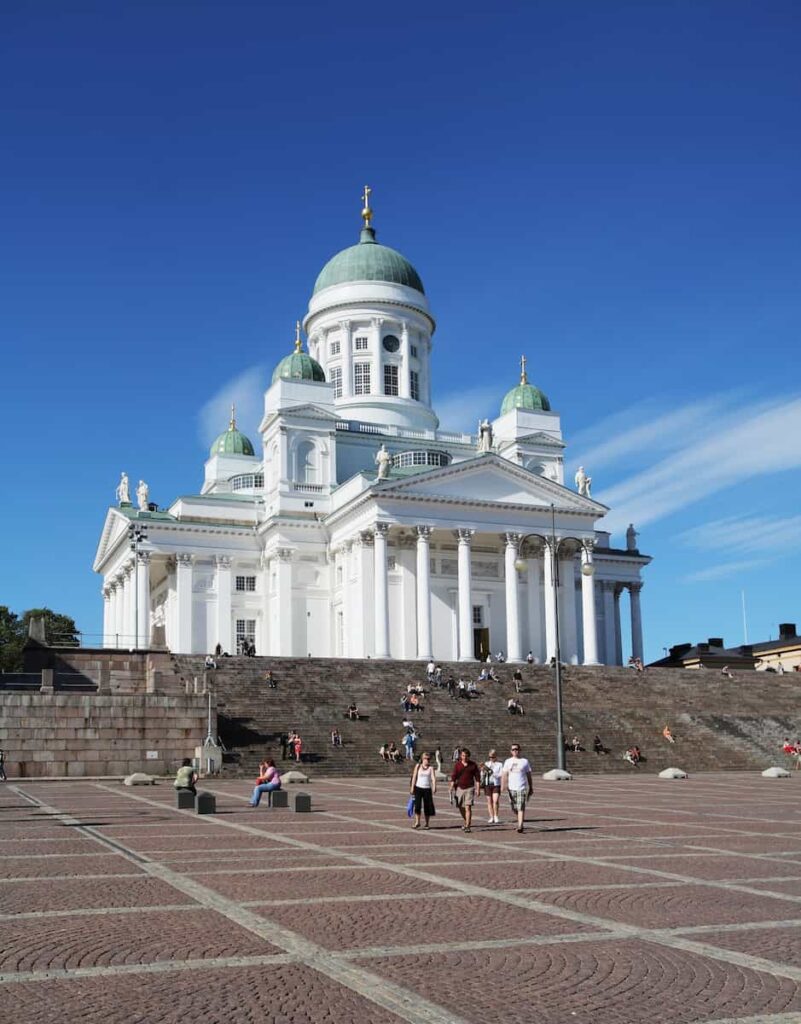I may be biased, but Scandinavia is definitely an incredible part of the world. With some of the most incredible landscapes you’ll find in nature combined with some fascinating cultures, delicious food and great people, you should definitely take some time to explore the area when you can.
But if you’re planning a trip to Scandinavia specifically, it’s good to know just which countries you should visit. Which brings us to the question: is Finland part of Scandinavia?
Like many things, the answer is: it depends. Keep reading to find out just why there’s no clear answer to this question.

Table of Contents
Is Finland part of Scandinavia?
No, strictly speaking, Finland is not geographically part of Scandinavia as it is not considered as being on the Scandinavian peninsula. However, Finland shares an extensive history and culture with its neighbors, prompting some to say that it should be included in the definition of Scandinavia.
The question of whether or not Finland is part of Scandinavia is a complex one. There are a number of factors to consider, including history, culture, geography, and politics.
Let’s take a closer look at each of these factors to see if they provide evidence for or against Finland being considered part of Scandinavia.
Was Finland historically part of Scandinavia?
Historically, Finland has been considered part of Scandinavia. This is because the region was inhabited by the same Germanic tribes that settled in other parts of Scandinavia. Additionally, Finland was under Swedish and Danish rule for centuries.
This includes that it was actually ruled by Sweden for six centuries, with Sweden sending large numbers of colonists to what is now Finnish territory.

During that time, the Finnish people were treated as second-class citizens. They were not given the same rights and privileges as the Swedish people, and they were often taxed heavily. In addition, Swedish became the dominant language of the nobility and administration, with Finnish being considered a language for peasants and the clergy, as well as local courts in Finnish-speaking areas.
In the early 19th century, Finland came under Russian rule. This continued for over 100 years, until Finland became independent in 1917.
Despite becoming an independent country at that point, it’s clear that centuries of foreign influence, primarily from other Scandinavian countries, continue to be present in Finnish culture and society. This, in turn, makes a strong argument for Finland being part of Scandinavia from a historical perspective.
Related: Denmark vs Finland: Which Is Better to Visit (or Live In)?
Is the Finnish language similar to other Scandinavian languages?
The Finnish language is not similar to other Scandinavian languages, with Danish, Norwegian and Swedish being considered mutually intelligible. Instead, Finnish is part of the Finno-Ugric language family, which includes Hungarian and Estonian. That said, around 5% of Finns speak Swedish as their native language.
The Finno-Ugric languages are not related to the Indo-European languages, with Finnish actually being one of only four languages spoken in the EU that don’t have these roots.
At the same time, because of Finland’s close geographic proximity to the Nordic countries and, in particular, its centuries-long rule by Sweden, there are some similarities between Finnish and the Scandinavian languages.

For example, both Finnish and Swedish have some words that are pronounced similarly and have the same meaning. They are far from mutually intelligible though.
This historical influence on language in Finland today can also be seen by the fact that Russian is the third most spoken native language in Finland, with 1.5% of the population speaking it. It should also be kept in mind that a small percentage of the population speaks the indigenous Sami languages.
As such, based on linguistic roots and connections, this suggests that Finland is not part of Scandinavia.
At the same time, not all countries need to have linguistic connections to be considered part of the same area – look at Europe as an example, with its multitude of different languages that have Latin, Germanic and other roots.
So the hunt for an answer continues!
Is Finland politically similar to other Scandinavian countries?
Like Denmark and Sweden, Finland is a member of the European Union. All three countries are also members of the Nordic Council along with Iceland and Norway. As such, Finland has many similarities from a political perspective with the other Scandinavian countries, including in terms of the rights granted to Finnish citizens.
For example, Finland ranks first in the world when it comes to political and civil freedom, according to this year’s Freedom in the World Report, which uses indicators such as freedom status, political rights and civil liberties. The other Scandinavian countries rank similarly, showing that they all share a strong foundation in rights and freedoms.

Finland was also equal first (with Denmark) in this year’s Corruption Perceptions Index (CPI), with Norway and Sweden being next in line. The CPI is considered the leading global indicator of public sector corruption and again shows similar values at the political level across the various Nordic countries.
As such, there are a number of indicators showing shared political and rights-based values between Finland and the confirmed Scandinavian countries of Denmark, Norway and Sweden. While this alone does not prove that Finland is part of Scandinavia, it does show clear linkages on a number of levels with the various countries that tend to support an argument that Finland is Scandinavian.
Is Finland on the Scandinavian peninsula?
No, Finland is not on the Scandinavian peninsula. It shares a land border with Sweden and Norway, which are on the peninsula, and with Russia, which is not. Finland also has a long coastline along the Baltic Sea, which separates it from Denmark and much of Norway.
Strictly speaking, the Scandinavian peninsula only includes Norway, Sweden, and Denmark. Finland is also much closer to Russia than Denmark – in fact, Helsinki is less than 400 km or 250 miles by road to St Petersburg.
As such, if you’re asking whether Finland is part of Scandinavia solely from a geographical perspective, the answer is clear – no, it’s not.
That said, Scandinavia is more than just a geographical region, leading many to not see this as the sole factor to consider when deciding whether or not Finland is Scandinavian.
Find out more about: Helsinki Syndrome: What Is It and Is It Real?
What is the history of the Scania part of Sweden?
The word Scandinavia actually comes from “Scania” (or Skåne in Swedish), the area which is now the southernmost of the historical provinces (landskap) of Sweden. It was first mentioned in written texts in the 8th century, stating that it was a part of Denmark at the time.
It was taken over by King Magnus of Sweden after the death in 1332 of King Christopher II of Denmark. However, the province was later reconquered by King Valdemar IV of Denmark in 1360, as part of his conquest campaign to regain previously lost Danish territory.
Scania’s geopolitical position, being on the Scandinavian mainland but part of the kingdom of Denmark, made it the center of the struggles between Denmark and Sweden for around 500 years to be the dominant authority in the Baltic region.

Holding Scania meant that Denmark held both sides of the Öresund strait, giving Denmark effective control over the entrance to the Baltic Sea and thus able to impose fees on foreign ships passing through. This was the major source of income for the Danish crown for centuries, which was greatly resented by Sweden.
Upon the signature of the Treaty of Roskilde in 1658, Scania became Swedish. Following a number of subsequent battles, Scania officially became part of Sweden in 1720 upon the last peace treaty being signed between Sweden and Denmark that summer.
Today, it is home to some of Sweden’s largest cities, including Malmo and Lund. Scania is also a popular tourist destination, with its beautiful coastline and picturesque villages.

But what does all this have to do with Finland being part of Scandinavia or not? Well, it’s quite clear that Finland had nothing to do with these struggles over Scania. All the other three Scandinavian countries, on the other hand, very much did (given that Norway was part of Denmark at the time).
At the same time, Scania is such a relatively small area of the wider Scandinavian region, that it can’t be considered as the deciding factor on whether or not Finland is part of Scandinavia. However, it’s an interesting history that shows how the other three Nordic countries may not have always been as friendly with one another as they are now, based on the literal root of Scandinavia – at least when it comes to its name.
Is Finland considered Nordic?
Yes, Finland is considered Nordic. Nordic simply means “of the north” and thus is commonly used to refer to those countries located in northern Europe, which includes Finland. The country is also a member of the Nordic Council alongside Denmark, Sweden, Iceland and Norway.
As I’ve mentioned a few times now, the region known as Scandinavia definitely includes the countries of Norway, Sweden and Denmark – all of which are located in Northern Europe. Finland is also located in Northern Europe, and while the jury is still out on whether Finland is part of Scandinavia, it is still considered Nordic.
While many people (including me on this site, to be very honest) refer to Scandinavian vs Nordic countries interchangeably, that may not always be strictly correct. In particular, Iceland isn’t generally considered Scandinavian, even if it’s Nordic. As we can see in this article, this uncertainty is also the case with Finland.

However, the example of Iceland means that whether a country is Nordic doesn’t mean it’s also Scandinavian. So, if we’re being really pedantic, there is a difference between being Scandinavian vs Nordic.
Funnily enough, no less than Hans Christian Andersen himself used the terms Nordic vs Scandinavian without any hint of a difference. His poem, “I Am Scandinavian” was written in a fit of patriotic fervor for his home region. During a visit to the Danish island of Funen, he says that he thought of Sweden and “sensed the beauty of the Nordic spirit”.
Does this help us here though? Not at all! In fact, this poem specifically refers to his wish to “Let Norway, Sweden, Denmark stay as one”. The poem also says:
We Scandinavians are a single people,
Hans Christian Andersen, “I Am Scandinavian”, 1839
Although three kingdoms are our native lands
…so clearly, according to him, Finland isn’t part of Scandinavia – well, at least it wasn’t in July 1839 when this poem was written. Which perhaps makes sense when you remember that Finland was under Russian control at the time.
Is Finland Baltic or Scandinavian?
There is some debate over whether Finland is more likely to be considered Baltic or Scandinavian. While the country is geographically located in the Baltic region, culturally and politically, Finland is more closely aligned with Sweden, Norway, and Denmark – the other countries commonly considered part of Scandinavia.
As outlined above, Finland’s history is closely intertwined with that of the three confirmed Scandinavian countries, especially Sweden. For centuries, the two countries were ruled by the same monarch.

In addition, Finland shares many traditions with its Scandinavian neighbors. Like Sweden, Norway, and Denmark, Finland has a strong democratic government with human rights being firmly entrenched in its system of governance. There are also a number of cultural similarities, perhaps unsurprisingly given how the various countries have interacted throughout history.
Geographically, though, is where the real question arises of Finland being Baltic or Scandinavian. Finland isn’t part of the Scandinavian peninsula and is much closer to the Baltic states, indicating that this could be one point in favor of it being more Baltic.
So is Finland Scandinavian?
There is no clear answer as to whether Finland is part of Scandinavia. Geographically, it’s evident that Finland is not part of the Scandinavian peninsula. Similarly, linguistically, Finland is very different from Denmark, Norway and Sweden.
But Finland does have centuries of historical ties to Sweden in particular, as well as Denmark and Norway to some extent. There are also very strong cultural and political similarities between each of the Nordic countries, making it easy to see why a lot of people simply use the terms “Nordic” and “Scandinavian” interchangeably.
Ultimately, the answer to the question of whether Finland is part Scandinavian may come down to the context in which the question is being asked. As outlined just above, it’s obvious that, on certain points (particularly when it comes to geography or language) the answer is no.
But if there is any sort of cultural, historical or political consideration involved, the argument can definitely be made that Finland is Scandinavian.
Either way, if you’re planning a trip throughout Scandinavia, you can’t go wrong if you include Finland on your itinerary
